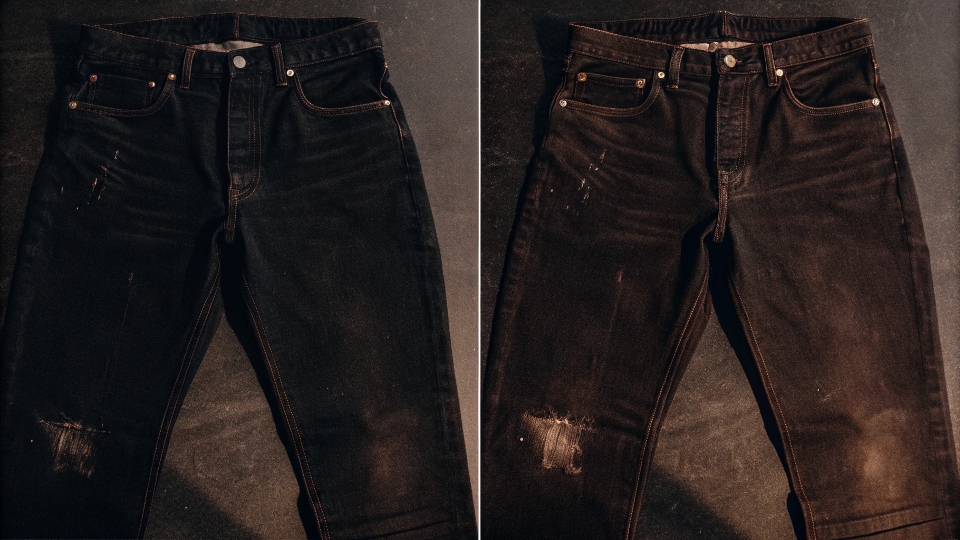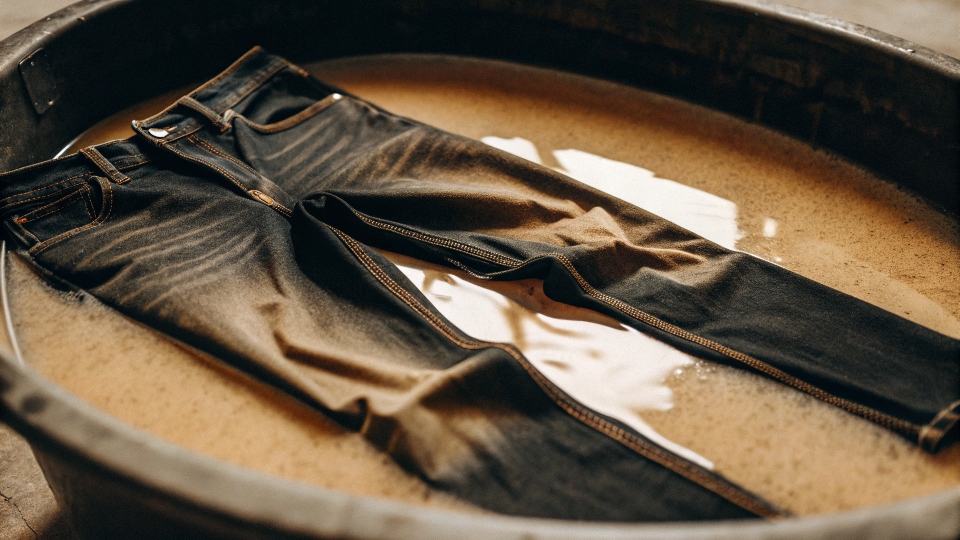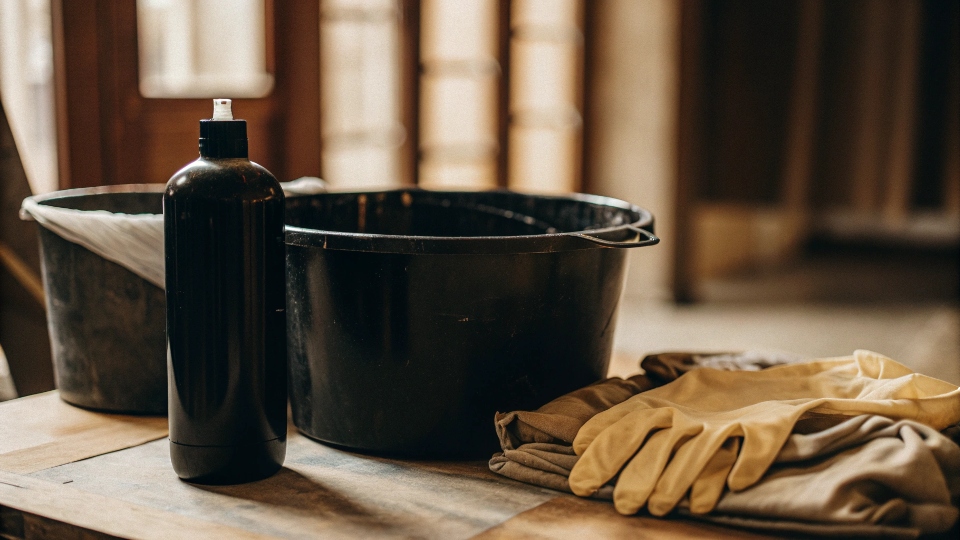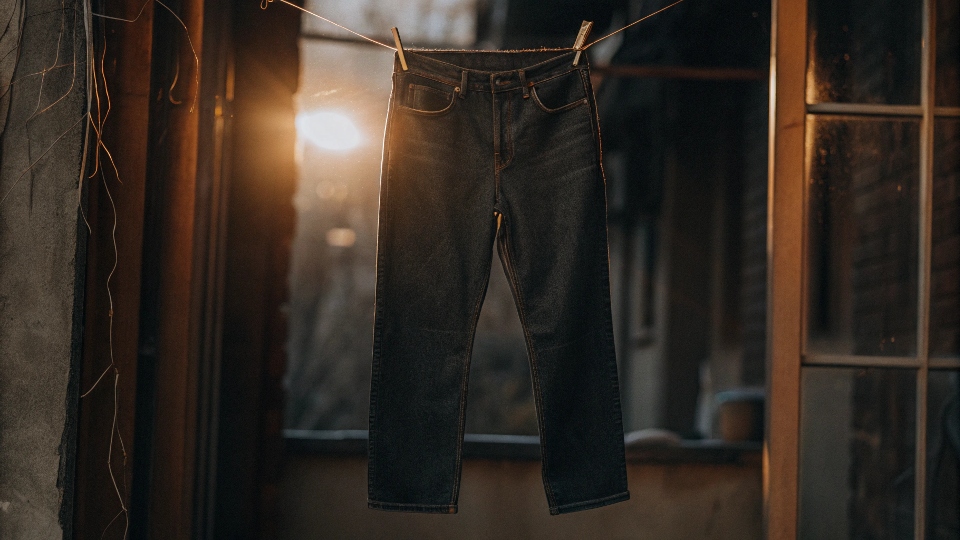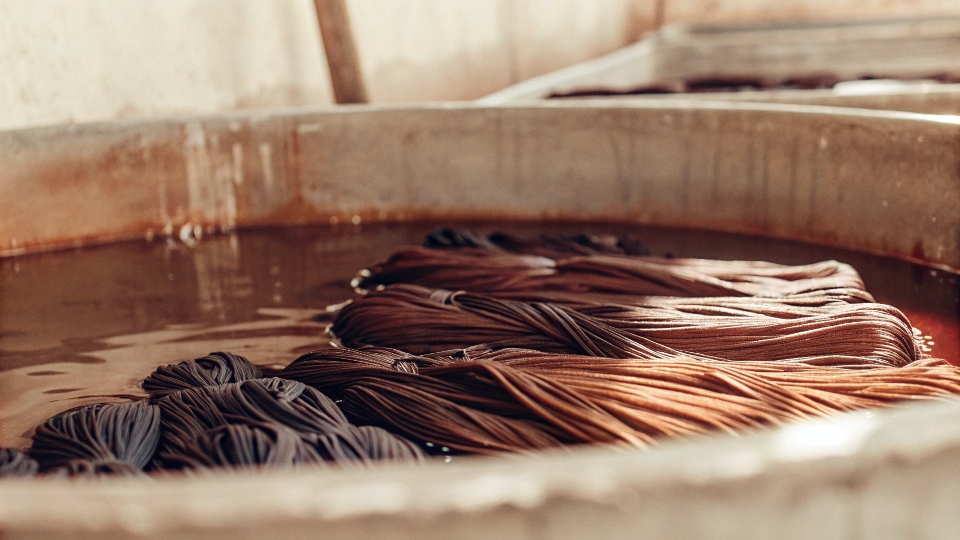Your favorite black jeans1 are now a disappointing shade of gray. They've lost their sharp, bold look, making your entire outfit feel dated and worn out.
To temporarily darken faded black jeans without dye, you can soak them in a strong black coffee solution2 or use vinegar in the wash cycle. These methods offer a subtle, natural tint, but for a true, long-lasting restoration, fabric dye is the most effective solution.
At my factory, DiZNEW, creating a black denim that holds its color is one of our biggest challenges and points of pride. We use special sulfur dyes and finishing processes to lock in that deep, saturated color.
But over time, with washing and wear, all black fabrics will eventually fade. While there's no magic trick to permanently restore color without re-dyeing, a few at-home methods can give your jeans a much-needed refresh. It's important to understand what these tricks can and can't do.
How can I restore my faded black jeans without dye?
You want to bring your black jeans back to life, but you're trying to avoid the mess and commitment of using chemical dyes. You need a simpler, more natural approach.
You can temporarily restore faded black jeans3 by soaking them in a concentrated brew of black coffee or black tea. The natural tannins in the coffee or tea act as a subtle stain, depositing a small amount of color onto the fabric fibers.
This might sound unusual, but it’s a classic home remedy4 that uses basic chemistry. The tannins found in dark plants are a form of natural dye. While not as potent or permanent as commercial dyes, they can give your jeans a noticeable boost.
Using Natural Stains
- The Coffee or Tea Bath: Brew a very strong, large pot of black coffee or black tea—the darker, the better. You'll need enough liquid to fully submerge the jeans. Let it cool slightly so you don't burn yourself, then place your clean, damp jeans into the bath.
- Soak and Set: Let the jeans soak for at least a few hours, or even overnight, for maximum color absorption. Afterwards, you can run them through a rinse cycle with a cup of white vinegar. The vinegar helps to set the color you've just added.
| Method | Effectiveness | Permanence | Best For |
|---|---|---|---|
| Coffee/Tea Soak | Subtly darkens faded areas | Low, lasts a few washes | A quick, natural refresh |
| Vinegar Rinse | Helps set color and prevent fading | Low, needs repeated use | Maintaining existing color |
Remember, this is a temporary fix. It’s a great way to get a few more wears out of your favorite pair before a big event, but the color will fade again with subsequent washes.
How do I get my black jeans black again?
The natural methods5 weren't strong enough. Your jeans are seriously faded, and you need a powerful solution that will deliver a true, deep black that lasts.
The most effective and long-lasting way to get your black jeans truly black again is to re-dye them with a commercial fabric dye6. Products like RIT dye are specifically designed to restore color saturation and provide excellent, like-new results.
When we want to achieve the deepest black in the factory, we use specialized industrial dyes. For home use, a good quality all-purpose dye is your best option.
I've heard from many designers and home sewers who swear by this method. A friend recently refreshed his favorite black jeans with RIT dye and shared his process.
He used a large bucket and the hottest water possible from his tap, even boiling some in a kettle to add to it. He pre-wet the pants before adding them to the dye bath.
A very important tip he shared was to add a splash of vinegar to the water if you have hard water, as it helps the dye absorb more evenly.
After dyeing, wash them cold on their own with an extra rinse to remove any loose dye. A washer cleaning tablet afterwards is also a great idea.
Important Dyeing Tips
- Safety First: Dye will stain everything. Wear old clothes and rubber gloves. Protect your workspace, and be careful not to splash.
- Follow Instructions: Always read the instructions on the dye package carefully. The ratio of dye, water, and fabric is important for good results.
- Clean Your Machine: If you use your washing machine for dyeing, run a cleaning cycle with bleach or a cleaning tablet immediately after to prevent dye from transferring to your next load of laundry.
How to darken jeans at home without dye?
You'd rather focus on keeping your new black jeans from fading than constantly trying to restore old ones. You want to know the secrets to long-term color preservation.
The best way to keep jeans dark without dye is to prevent fading through proper care. Wash them infrequently, always inside out in cold water, and use a detergent formulated for dark clothes. Most importantly, never put them in the dryer.
At the factory, the final step for many of our denim products is a wash. How we wash them has a huge impact on the final color. You can apply the same principles at home to preserve that deep black.
The Rules of Washing Black Denim
- Wash Less: Only wash your jeans when they are visibly dirty or start to smell. Fewer washes mean less color loss. You can spot-clean small stains.
- Go Cold & Gentle: Always use the cold water setting on your machine. Hot water breaks down the dye and causes it to bleed out of the fabric. Use a gentle cycle to reduce friction.
- Turn Them Inside Out: This protects the surface of the denim from the abrasion of the washing machine drum, which physically scrapes color off.
- Use the Right Detergent: Special detergents for dark colors are designed to minimize fading. They contain ingredients that help lock dye into the fabric.
- Air Dry in the Shade: Heat is the enemy of black denim. The high heat of a machine dryer is a primary cause of fading. Hang your jeans to air dry, but keep them out of direct sunlight, which can also bleach the color.
How to make black clothes black again naturally?
You have more than just jeans that are fading. Your whole collection of black clothing, from t-shirts to sweatshirts, could use a color boost without harsh chemicals.
Natural, tannin-rich solutions7 like black coffee, black tea, or even a dye made from boiled walnut hulls can be used to naturally re-stain any black clothing made from natural fibers like cotton. The process involves steeping the clothes in the solution.
The same principle we discussed for jeans applies to other natural fabrics. Cotton, linen, and rayon will all absorb these natural stains to some degree.
This method won't work on synthetic fabrics like polyester or nylon, as their fibers are essentially plastic and do not absorb water-based stains.
The key is to create a very concentrated liquid. You need enough tannins to make a real difference. For something like walnut hulls, you would boil them in water for a couple of hours to extract the dark color, then strain the liquid before adding your clothes.
This is a very old-fashioned method of dyeing, and while the results are more subtle and less permanent than modern dyes, it's a great choice if you're committed to using only natural products in your home. It’s an interesting project that connects you to the way clothes were colored for centuries.
Conclusion
Natural methods like a coffee soak can subtly refresh black jeans. For a true, lasting restoration, fabric dye is the best tool, while proper cold washing is key to prevention.
-
Explore expert tips on maintaining the color and quality of your black jeans for a longer-lasting wardrobe. ↩
-
Learn how using a black coffee solution can naturally enhance the color of your fabrics. ↩
-
Discover effective techniques to bring your faded black jeans back to life without resorting to harsh chemicals. ↩
-
Explore various home remedies that can effectively restore color in your clothes without chemicals. ↩
-
Explore various natural methods to refresh your clothing's color without using synthetic dyes. ↩
-
Learn about the advantages of using commercial fabric dyes for achieving vibrant and lasting colors. ↩
-
Explore the benefits of tannin-rich solutions for naturally dyeing and restoring fabrics. ↩

